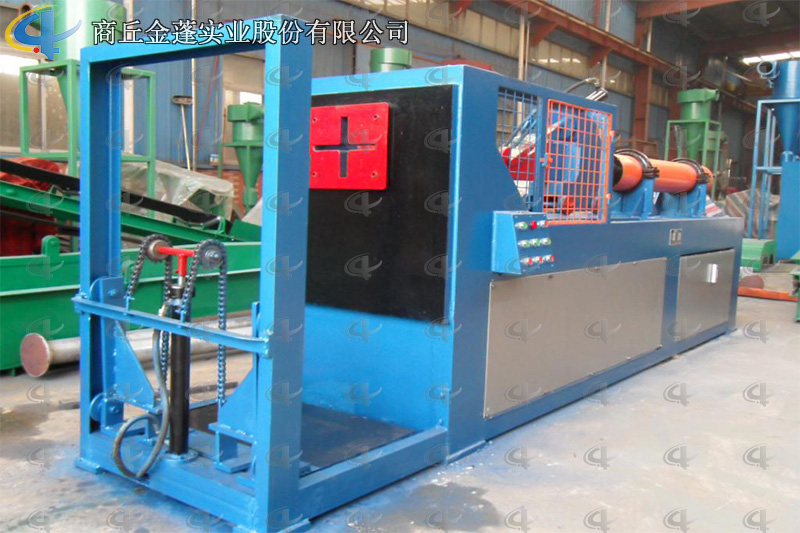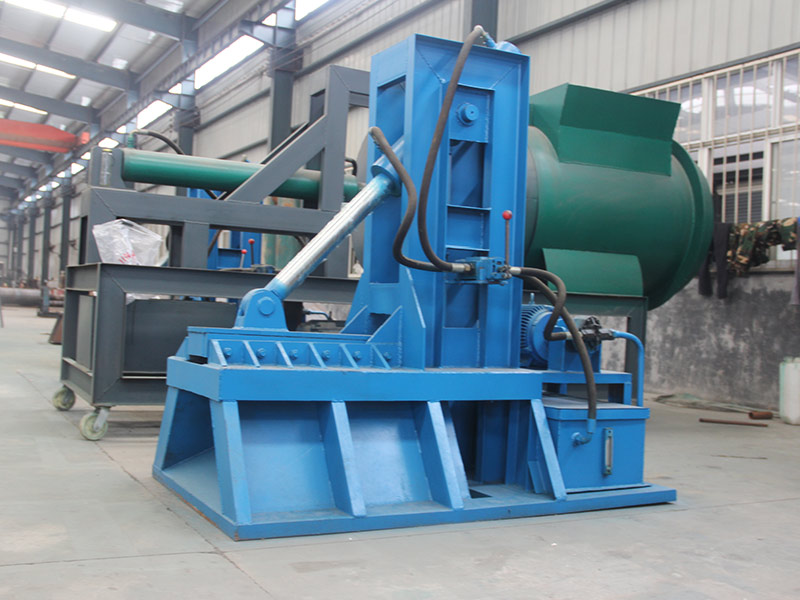Valve corrosion, usually understood as the valve metal material under the chemical or electrochemical environment suffered damage. As "corrosion" occurs in the spontaneous interaction between metal and the surrounding environment, how to separate metals from the surrounding environment or use more non-metallic synthetic materials has become a common concern. As we all know, metal corrosion damage to the valve's duration, reliability and service life have a considerable impact. The effect of mechanical and corrosion factors on the metal greatly increases the total amount of contact surface wear. Valve in operation, the total amount of wear on the surface of the friction. During operation of the valve, the frictional surface is subject to wear and tear as a result of simultaneous mechanical action and chemical or electrochemical interaction of the metal with the environment. For valves, the climatic conditions of the pipeline work are complicated; the presence of hydrogen sulfide, carbon dioxide and certain organic acids in media such as oil, natural gas and formation water increases the destructive power of their metal surfaces and rapidly loses their ability to work. As the metal's chemical corrosion depends on the temperature, the mechanical load on the friction parts, the sulfide contained in the lubricating material and its acid resistance, the duration of the contact with the medium and the catalytic effect of the metal on the nitriding process, Material molecules on the metal conversion speed and so on. Therefore, the anticorrosion method (or measure) of metal valve and the application of synthetic material valve have become one of the topics of the valve industry research at present. 1. Anticorrosion of metal valves is to be understood as applying a protective coating (such as paint, pigments, lubricants, etc.) on metal valves that protects them against corrosion so that the valve, whether manufactured, stored, transported or in its The entire process is not subject to corrosion. The method of metal valve corrosion protection depends on the required protection period, shipping and storage conditions, valve construction features and materials, and of course, the economic effects of antisepsis to be considered. There are four main methods of anticorrosive metal valves and their parts: 1, the volatile anti-corrosion agent into the atmosphere of the steam (wrapped with a resistive paper, blowing air to inhibit the passage of products through the chamber, etc.). 2, using the resistance of water and alcohol solution. 3, the anti-corrosion (protection) material coated on the valve and its parts surface. 4, the resistance of the thin film or polymer coating on the valve and its parts surface. (Note: The current valve manufacturers, the widespread use of lubricants and water resistance to dissolve the flow of anti-corrosion.) Second, the application of materials, valves, synthetic materials, valves in many corrosive conditions are better than the metal valve, the first is anti-corrosion Sex, followed by the net weight, as its strength, depends on the shape of the enhanced fibers, arrangement and quantity. (In general, the greater the percentage of fiber, the greater the strength of the composite.) In valve applications, the weight content of the fibers ranges from 30% to 40% by weight, whereas the chemical stability is primarily due to the potting of the final product Fiber resin properties of the body decided. In synthetic valves, the solid polymer body can be either a thermoplastic such as PVC-PVDF, PPS-PPS, or a thermosetting resin such as polyester, ethylene and epoxy Wait). Thermosetting resins retain their strength at elevated temperatures compared to thermoplastics (ie thermosetting resins have a higher heat distortion temperature). (Note: The determination of the thermal resistance of synthetic materials is referred to as heat distortion temperature under service conditions.) Currently, the most commonly used synthetic materials for chemical process valves are vinyl epoxies (thermoplastics) whose reinforcing fibers Shredded glass fibers (1/4 inch long) and chopped graphite fibers (1/4 inch long). The table below compares the performance of most widely used synthetic materials with that of corrosion resistant metals. Glass Reinforced Vinyl Graphite Reinforced Vinyl Graphite Reinforced PPS 316SS Hast-C Tensile Strength (Psi) Bending Strength (Psi) NA NA Compressive Strength (Psi) Heat Deformation Temperature (° F) NA NA Coefficient of Thermal Expansion (in / in / ° F) 15 × 10-6 15 × 10-6 13 × 10-6 6.3 × 10-6 9.9 × 10-6 Note: NA Inapplicable (or ineffective) From surface analysis, glass and graphite reinforced composite materials have a lower tensile strength compared to metal, and therefore, the section of synthetic material valves where the stress is greater should have thicker sections with Ribs to achieve the same performance with metal. Due to its corrosion resistance, high strength and light weight, synthetic valves make it an economical alternative valve product for many metal or fiberglass reinforced piping systems in corrosive service. In the chemical process conditions, excellent prospects for the use of synthetic valves. In the valve industry, the use of organic and synthetic materials is no longer the concept of traditional metal and non-metal valve materials. Ceramic (the valve temperature can be increased from 400 ℃ to 1200 ℃ above), plastic (with anti-corrosion characteristics), synthetic materials (corrosion resistance, light weight, high strength characteristics), memory alloy Memory alloy or temperature memory alloy reversibility and high elasticity to create the valve) and so on. New materials, is developing a large number of high-performance valve with new products. The development of new technologies, so that a variety of engineering materials used in valve manufacturing has become possible.
Steel-drawer
Model:XY-P80 XY-p120
Specification:
The Steel-drawer pull out the whole bar, the sidewall because of the role of the pull mouth,promoting rubber tearing, smoothly separate wire and rubber.

Advantages:
1.This equipment adopts double vane pump to supply oil, low working noise, at the same time to ensure the speed and pressure of the drawing cylinder when working, and improve the working efficiency and the service life of the valve.
2.The automatic lifting device is adopted to reduce the labor intensity of workers;
3.The inner guide rail positioning, make sensor reliability retractor positioning highly accuracy, drawing cylinder operation smoothly.
4.Using manual automatic exchange of work,flexible choice.
Automatic Feeding Machine
Model: XY-AL200 / XY-AL500 / XY-AL800 / XY-AL1200
Specification:
Automatic feeding machine mainly through the use of 60 tons of hydraulic pressure as the driving force, can be used to push scrap plastic/ tires with hydraulic column extrusion into reactor, the whole operation process is stable, simple and convenient.
Advantages:
Fully automatic design, save time and manpower;
Highly improve the feeding capacity: manually feeding can only reach 150-170KGS/m³. By using the automatic feeding machine, it could reach to 240-280KGS/m³, which greatly improve the feeding capacity.

The Tyre Cutting Machine
Model: XY-C800 XY-C1200
Specifications:
The tyre cutting machine is applied to cut all kinds of rubber blocks and strips,it is good for cutting rubber tyre,rail tyre, rubber strips etc.
Advantages:
1.This machine with large cutting knife,good shearing effect,fast cutting speed and low energy consumption;
2.Small size, easy to move;
3.Adopt hydraulic system, easy to operate and very safe design.

The Whole Tyre Crusher
Model: XY-SH800 / XY-SH1200
Specifications:
At the room temperature, put the tyre or large plastics of rubber into the press directly,which can be crushed into 1-8cm pieces.
Advantages:
1.Compact structure, advanced technology, low energy consumption, high efficiency;
2.The crushing chamber is an open structure,which is convenient for maintenance;
The knife is made of hard alloy steel, which has high hardness, high wear resistance and can be used repeatedly;
3.This machine adopts the hardened reducer, round screen for structural steel wire mesh, large blanking area,which is good for qualified rubber material screening.
Other Assistant Equipments
Tyre Steel Drawer,Automatic Feeder, Assistant Equipments
Shangqiu Jinpeng Industrial Co., Ltd. , https://www.recyclings.nl


